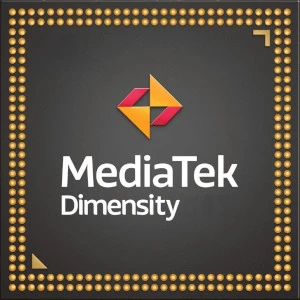MediaTek Dimensity 800 vs Unisoc Tanggula T760 5G
The Unisoc Tanggula T760 5G and MediaTek Dimensity 800 are two processors with unique specifications.
In terms of CPU cores and architecture, the Tanggula T760 5G has a more powerful configuration. It consists of 4x 2.2 GHz Cortex-A76 cores and 4x 1.8 GHz Cortex-A55 cores, providing a total of 8 cores. On the other hand, the Dimensity 800 has 4x 2.0 GHz Cortex-A76 cores and 4x 2.0 GHz Cortex-A55 cores, resulting in only 4 cores. In this aspect, the Tanggula T760 5G offers better multitasking capabilities and overall performance.
When it comes to the instruction set, both processors use the ARMv8.2-A instruction set, representing the latest technology available. Therefore, they offer similar compatibility and support for various software and applications.
In terms of lithography, the Tanggula T760 5G has a slight advantage with a 6 nm lithography compared to the Dimensity 800's 7 nm. A smaller lithography generally indicates better power efficiency and performance.
Regarding thermal design power (TDP), the Tanggula T760 5G has a lower TDP of 5 Watts compared to the Dimensity 800's 10 Watts. A lower TDP generally signifies better power efficiency and reduced heat output.
Both processors feature Neural Processing Units (NPUs), which are specialized ai-accelerators. These NPUs enhance the processors' ability to handle AI-related tasks, resulting in improved performance and efficiency in tasks such as image recognition and natural language processing.
Overall, the Tanggula T760 5G outshines the Dimensity 800 in terms of CPU cores, lithography, TDP, and potentially overall performance. However, it is important to consider other factors such as price, optimization, and user requirements when choosing between the two processors.
In terms of CPU cores and architecture, the Tanggula T760 5G has a more powerful configuration. It consists of 4x 2.2 GHz Cortex-A76 cores and 4x 1.8 GHz Cortex-A55 cores, providing a total of 8 cores. On the other hand, the Dimensity 800 has 4x 2.0 GHz Cortex-A76 cores and 4x 2.0 GHz Cortex-A55 cores, resulting in only 4 cores. In this aspect, the Tanggula T760 5G offers better multitasking capabilities and overall performance.
When it comes to the instruction set, both processors use the ARMv8.2-A instruction set, representing the latest technology available. Therefore, they offer similar compatibility and support for various software and applications.
In terms of lithography, the Tanggula T760 5G has a slight advantage with a 6 nm lithography compared to the Dimensity 800's 7 nm. A smaller lithography generally indicates better power efficiency and performance.
Regarding thermal design power (TDP), the Tanggula T760 5G has a lower TDP of 5 Watts compared to the Dimensity 800's 10 Watts. A lower TDP generally signifies better power efficiency and reduced heat output.
Both processors feature Neural Processing Units (NPUs), which are specialized ai-accelerators. These NPUs enhance the processors' ability to handle AI-related tasks, resulting in improved performance and efficiency in tasks such as image recognition and natural language processing.
Overall, the Tanggula T760 5G outshines the Dimensity 800 in terms of CPU cores, lithography, TDP, and potentially overall performance. However, it is important to consider other factors such as price, optimization, and user requirements when choosing between the two processors.
AnTuTu 10
Total Score
GeekBench 6 Single-Core
Score
GeekBench 6 Multi-Core
Score
CPU cores and architecture
| Architecture | 4x 2.0 GHz – Cortex-A76 4x 2.0 GHz – Cortex-A55 |
4x 2.2 GHz – Cortex-A76 4x 1.8 GHz – Cortex-A55 |
| Number of cores | 4 | 8 |
| Instruction Set | ARMv8.2-A | ARMv8.2-A |
| Lithography | 7 nm | 6 nm |
| TDP | 10 Watt | 5 Watt |
| Neural Processing | NPU | NPU |
Memory (RAM)
| Max amount | up to 16 GB | up to 16 GB |
| Memory type | LPDDR4X | LPDDR4X |
| Memory frequency | 2133 MHz | 2133 MHz |
| Memory-bus | 2x16 bit | 4x16 bit |
Storage
| Storage specification | UFS 2.2 | UFS 3.1 |
Graphics
| GPU name | Mali-G57 MP4 | Mali-G57 MP6 |
| GPU Architecture | Mali Valhall | Mali Valhall |
| GPU frequency | 650 MHz | 850 MHz |
| Execution units | 4 | 6 |
| Shaders | 64 | 96 |
| DirectX | 12 | 12 |
| OpenCL API | 2.1 | 2.1 |
| OpenGL API | ES 3.2 | ES 3.2 |
| Vulkan API | 1.2 | 1.2 |
Camera, Video, Display
| Max screen resolution | 2520x1080@120Hz | 2160x1080 |
| Max camera resolution | 1x 80MP, 1x 32MP + 1x 16MP | 1x 64MP, 2x 24MP |
| Max Video Capture | 4K@30FPS | FullHD@30fps |
| Video codec support | H.264 (AVC) H.265 (HEVC) VP9 |
H.264 (AVC) H.265 (HEVC) |
Wireless
| 4G network | Yes | Yes |
| 5G network | Yes | Yes |
| Peak Download Speed | 2.77 Gbps | 2.7 Gbps |
| Peak Upload Speed | 1.2 Gbps | 1.5 Gbps |
| Wi-Fi | 5 (802.11ac) | 5 (802.11ac) |
| Bluetooth | 5.1 | 5.0 |
| Satellite navigation | BeiDou GPS Galileo GLONASS QZSS |
BeiDou GPS Galileo GLONASS |
Supplemental Information
| Launch Date | 2020 Quarter 2 | 2021 February |
| Partnumber | MT6873, MT6873V | T760 |
| Vertical Segment | Mobiles | Mobiles |
| Positioning | Mid-end | Mid-end |
Popular comparisons:
1
MediaTek Dimensity 1000L vs MediaTek Helio G91
2
Samsung Exynos 1280 vs Qualcomm Snapdragon 678
3
Google Tensor G3 vs MediaTek Helio G37
4
Apple A14 Bionic vs MediaTek Helio G90T
5
MediaTek Dimensity 9200 Plus vs Qualcomm Snapdragon 860
6
Qualcomm Snapdragon 625 vs Qualcomm Snapdragon 665
7
Qualcomm Snapdragon 835 vs MediaTek Helio G50
8
MediaTek Dimensity 920 vs Qualcomm Snapdragon 670
9
Qualcomm Snapdragon 685 vs Samsung Exynos 1580
10
Qualcomm Snapdragon 730 vs Unisoc Tanggula T740 5G

